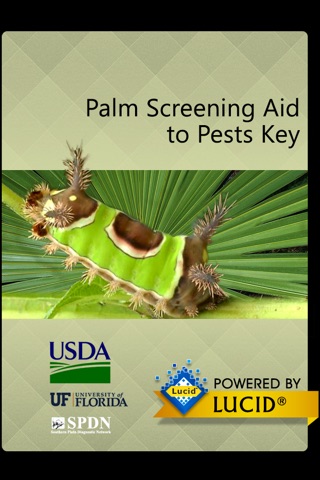
Palm Pests Key app for iPhone and iPad
Developer: United States Department of Agriculture-APHIS
First release : 20 Feb 2014
App size: 46.94 Mb
Palms are one of the most familiar plant families. They are commonly cultivated as ornamentals, and many palms have been used as crop plants for centuries, providing important sources of food and a variety of other products. As such, palms are one of the most economically important groups of plants. Relative to most cultivated plants, palms are relatively pest-free. However, a number of arthropod pests attack palms in sufficient force to be a threat to the plant, and some vector diseases that are potentially lethal to palms.
The intended audience for these keys is non-experts working in the field within Cooperative Agriculture Pest Survey (CAPS), National Plant Diagnostic Network (NPDN), and other national, regional, and state agricultural agencies/organizations with responsibilities associated with pest and disease survey and detection. Since these keys are intended as a screening aid for less experienced users in the field, most features in the keys can be used with the naked eye or a handlens. Infrequently, a dissecting microscope or stereoscope may be required for very small specimens. For definitive species confirmation, specimens should be sent to an expert for verification.
Palm Pests is, first and foremost, a tool to aid the non-entomologist user in identifying which type of pest they may have, i.e. mite or scale? beetle or thrips? Therefore, the scope of the keys is the arthropod pests of palms, including mites and insects. The keys may take the user to class, order, family, genus, or species. The pest groups featured include mites, beetles, termites, moths and butterflies, bugs, and thrips. The keys provide screening and identification support to cultivated palm pests known to occur, as of 2010, in the United States (continental U.S. and Hawaii) and Caribbean Islands. Also included are pests of immediate concern to cultivated palms in the United States and Caribbean essentially those species that will likely move to this region in the very near future.
Key authors: Amanda J. Redford, Terrence Walters, Amanda Hodges, and Forrest W. Howard
This key is part of a complete Screening Aid to Palm Pests tool: http://idtools.org/id/palms/sap/
Lucid Mobile key developed by USDA APHIS ITP


